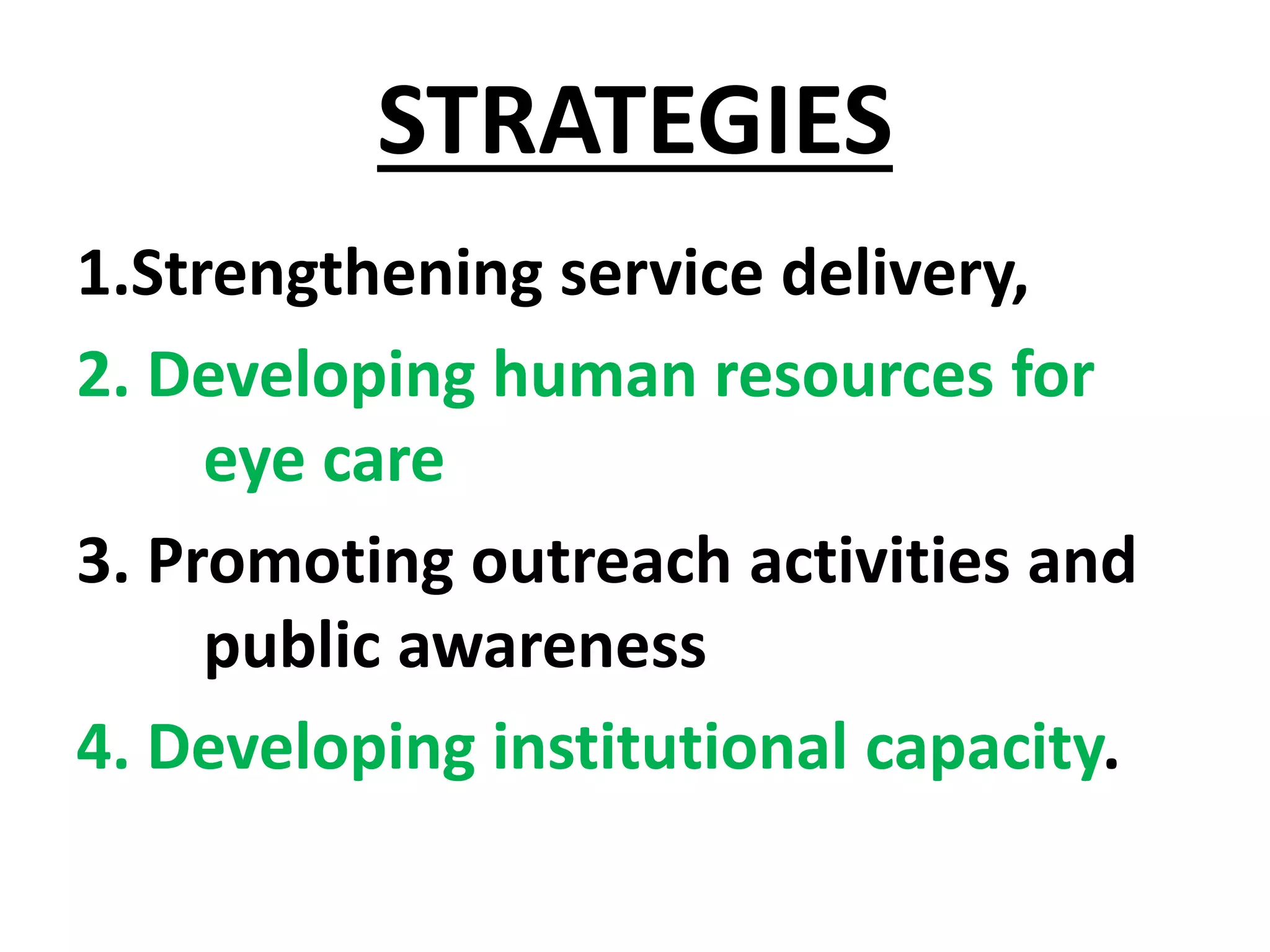The document discusses causes and extent of blindness in India. The leading cause is cataract (62.6%), followed by refractive error. The estimated prevalence of blindness is 1.1%. India has committed to reducing blindness as part of the WHO's Vision 2020 initiative. The National Programme for Control of Blindness was launched in 1976 and aims to reduce blindness prevalence through strategies like cataract surgeries and expanding eye care coverage, especially in rural areas.




































![• Integration of NPCB with the
National Rural Health mission
[NRHM] for ensuring optimal
utilization of the existing
infrastructure at various levels](https://image.slidesharecdn.com/blindness-171219063647/75/BLINDNESS-CONTROL-PROGRAMME-INDIA-37-2048.jpg)

















